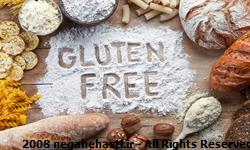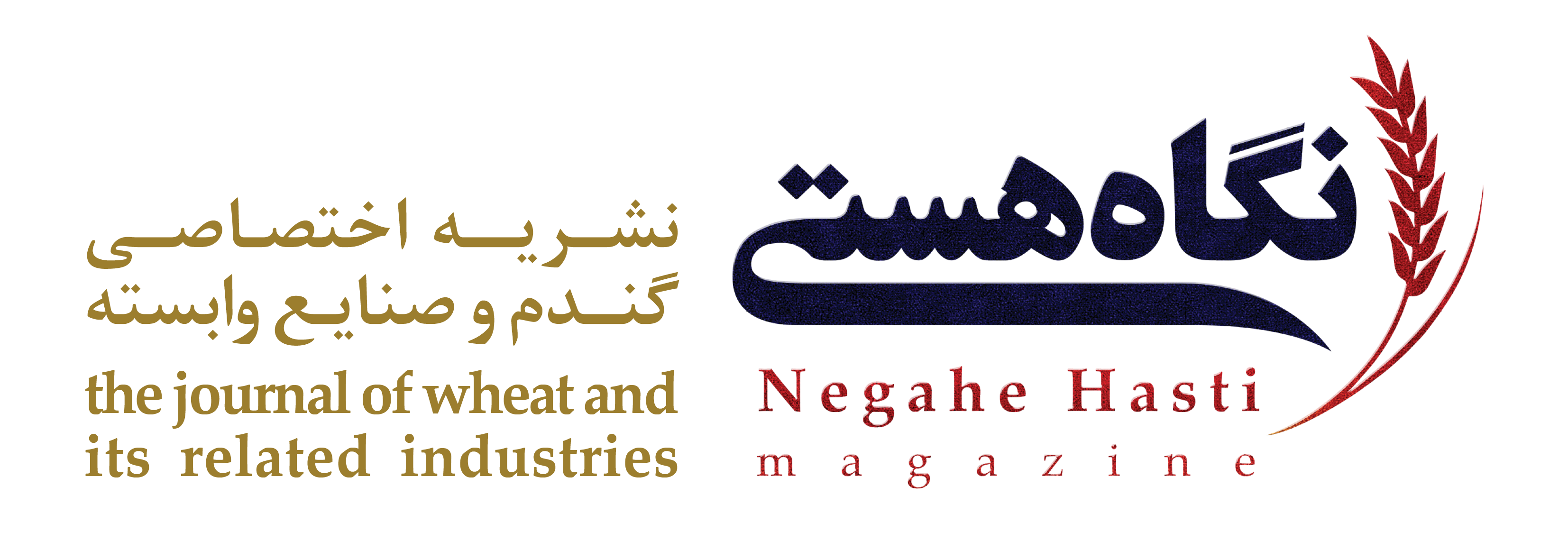![]() ارسال به دوست
ارسال به دوست  نسخه چاپي
نسخه چاپي

Gluten Free Food Market size to exceed $15bn by 2026
Gluten Free Food Market size exceeded USD 7.4 billion, globally in 2018 and is estimated to grow at over 9.4% CAGR between 2019 and 2026. Gluten Free Food Market size is set to surpass USD 15 billion by 2026; according to a new research report by Global Market Insights, Inc.
Gluten free food products exclude the protein gluten found in grains such as oats, wheat, rye, barley, and triticale. It is used in preparing various preparations in food & beverage market such as pizza, snacks, bakery & confectionery items, savories, pasta, bread, chocolates and croissants. A gluten free diet is essential for people diagnosed with celiac disease and sensitive digestive systems which will encourage gluten free food industry trends. These gluten free products are helpful in managing medical conditions associated with gluten allergy and digestive disorders. Market size to witness significant gains from gluten free ready meals & baby food products demand. Increasing demand for easily digestible & low-calorie food preparations should encourage gluten free food products usage. It is widely used in ready meal preparations owing to its benefits such as boosting metabolic rate and improving lipid profile. Oats & quinoa are widely used in manufacturing of gluten free ready meal preparations such as macaroni & noodles. This is due to rich concentration of protein, flavonoids and amino acids present in oats & quinoa which helps in overall wellbeing. Gluten free food preparations also help in improving cardiovascular health as it aids in digestion of unsaturated and trans-fat formation of lean muscles. Gluten free baby food made from oats & barley has witnessed increased adoption in market owing to factors such as rising awareness of healthy ingredients and increase in parental concern. Babies have weak & sensitive digestive systems, gluten free baby cereal aids in quick digestion and prevents vomiting. The use of gluten free alternatives in bakery preparations reduces fat content in preparations such as pastries and strudels, improves cholesterol and blood lipid profile by promoting healthy digestion and boosting metabolic rate. Potential benefits of gluten free diets such as increased appetite has enabled food & beverage manufactures to incorporate gluten and fat free alternatives in their market portfolio. Gluten free diets supports healthy propagation of digestive flora & fauna, reduces gastrointestinal discomforts, acid reflux, and aids in healthy weight loss. It helps in reducing the risk of cardiovascular diseases, digestive disorders, and diabetes as it triggers metabolic rate and promotes digestion of saturated and trans fats. The European Union issued regulation No 41/2009 regarding labelling and composition of food products. It complies that food labeled with very low gluten concentration and containing ingredients made from wheat, barley, oats, and rye should have gluten concentration below 100 parts per million of gluten (100 milligrams/kilogram) in food & beverage industry. Conventional stores to remain key distribution channel for gluten free food products Advertising initiatives in conventional stores such as sample tasting, banners, and posters is increasing the incidence of top-up shopping and distress purchases in market. Innovative advertising measures in conventional stores is driving innovation in market and changing consumer perceptions towards gluten free food products. Based on product, the market statistics is segmented into bakery, baby food, ready meals, cereals & snacks, pizza & pasta, and savories. Gluten free ingredients are compatible with preparing sweet & savory snacks, easy to digest, helps in eliminating empty carbs & calories, detoxifies the body, and aids in building leaner muscles. Gluten free snacks made from legumes, oats & barley are crunchier in texture compared to available gluten enriched counterparts in market. They are compatible with various preparation methods such as roasting, baking, and deep frying. Non gluten-based chips & crisps are light, crisp, easy to digest, and can be mixed with other vegetarian and non-vegetarian ingredients available in the market. Gluten free snacks are healthier & nutritious compared with traditional snacks owing to use of natural ingredients and natural preservatives. Moreover, these snacks are fried in healthier gluten free oils such as olive and sunflower oil and do not aggravate the production of digestive acids, preventing chronic conditions such as acid reflux, irritation, and heart burn thereby driving market growth. Prevalence of celiac disease and digestive disorders in Europe to be a leading cause of gluten free food consumption Gluten free ingredients can be used to prepare local European products such as strudels, pastries, baklava, and rolls. These alternatives possess the same taste & texture without high concentration of low-density lipoprotein (LDL) & calories and aid in regulating daily metabolic activities. Supportive government initiatives to overcome obesity and reduce cardiovascular mortality rates is making manufactures to switch towards gluten free & vegan options. Manufactures are utilizing high quality distillation processes to reduce gluten levels to 0% thereby boosting market expansion. Gluten free pizza & pasta to observe considerable gains from North America & Europe Gluten free ingredients can be used to prepare local European products such as strudels, pastries, baklava, and rolls. These alternatives possess the same taste & texture without high concentration of low-density lipoprotein (LDL) & calories and aid in regulating daily metabolic activities. Supportive government initiatives to overcome obesity and reduce cardiovascular mortality rates is making manufactures to switch towards gluten free & vegan options. Manufactures are utilizing high quality distillation processes to reduce gluten levels to 0% thereby boosting market expansion. Gluten free pizza & pasta to observe considerable gains from North America & Europe In March 2018, CEREALTO launched a range of healthy biscuits in market which included a variety of sugar free biscuits made with healthier grains such as quinoa, oatmeal, rich in vitamin B1 and are gluten free in nature. The new range is available in different formats such as single serve portion control packs and distributed through big retailers including Sainsbury in UK and HEB in the U.S. In January 2016, Boulders Brands partnered with Pizza Hut to launch two varieties of gluten-free pizzas in market, pepperoni and cheese using Udi’s signature crust. The product will be co-branded with Udi’s and Pizza Hut’s name and will be the first major pizza chain to sell a pizza prepared with procedures that have been certified by the Gluten Intolerance Group. In October 2019, London Food Corporation completed the acquisition of UK based firm Big Oz, engaged in manufacturing gluten free cereal and food. The company provides a wide variety of gluten free products such as crispy flakes, puffs, porridge, and granola. This acquisition will help the company to move towards health food segment, and diversifying product portfolio. The company is focused on increasing market penetration and also looking to diversify into export operations. What are the major factors propelling demand for gluten free food? How much will the European market for gluten free food grow in next few years? Who are the major players in gluten free food Industry worldwide?
Based on distribution channel, gluten free food industry size is segmented into conventional stores, hotels & restaurants, educational institutes, specialty services, and hospitals & drug stores. Conventional stores are easily available in cosmopolitical as well as developing cities which makes it easy for manufacturers to reach out to maximum consumers. Rising consumer affinity towards smaller stores that offer convenience & easy shopping experience is playing an active role in product distribution.
The gluten free food market report covers regions including North America, Europe, Asia Pacific, Latin America and Middle East & Africa. Europe demand should register over 9.6% gains by 2026. Gluten free diets are recommended to people diagnosed with celiac disease and digestive problems as it aids in healthy digestion by activating the production of gastric fluids and reducing inflammation & bloating.
Pizza & pasta are one of the most popular meals in North America & Europe and play a major role in everyday diets. Market alternatives in the form of gluten free pizza base, cheese, and pasta made from barley or quinoa are becoming popular owing to benefits such as high protein & antioxidant concentration, and easily digestible nature. Increasing demand in market for healthier alternatives owing to rising consumer conciseness towards healthy diets may boost gluten free food market demand.
Pizza & pasta are one of the most popular meals in North America & Europe and play a major role in everyday diets. Market alternatives in the form of gluten free pizza base, cheese, and pasta made from barley or quinoa are becoming popular owing to benefits such as high protein & antioxidant concentration, and easily digestible nature. Increasing demand in market for healthier alternatives owing to rising consumer conciseness towards healthy diets may boost gluten free food market demand.
Increasing consumer inclination towards healthy eating habits and rising awareness of the potential benefits of gluten free diets is propelling the industry demand.
The European industry for gluten free food will achieve over 9.6% CAGR from 2019 to 2026, as estimated by GMI.
Seitz Glutenfrei, Dr. Schar AG, Kellogg’s Company, General Mills, Glutafin, True Foods, Boulder Brands, Hero Group AG, CEREALTO, Silky Yay Foods, Prima Foods and Wheafree are the key players operating in the global market.
